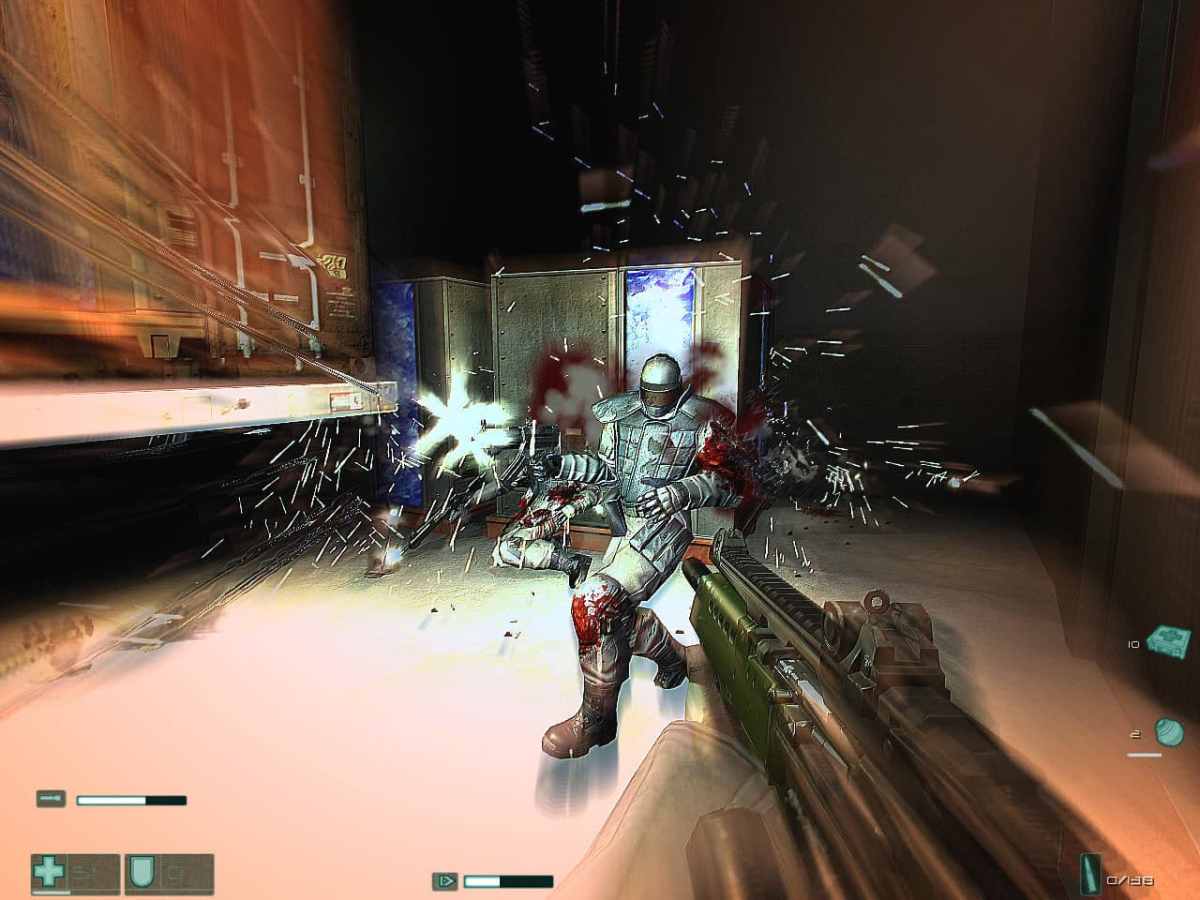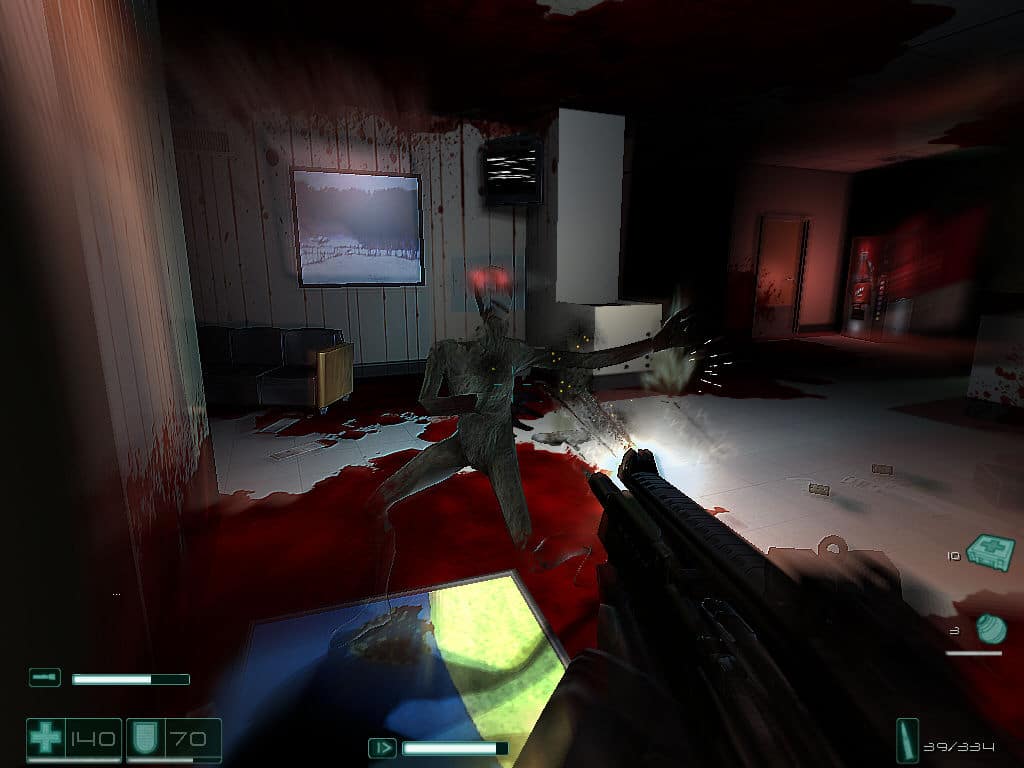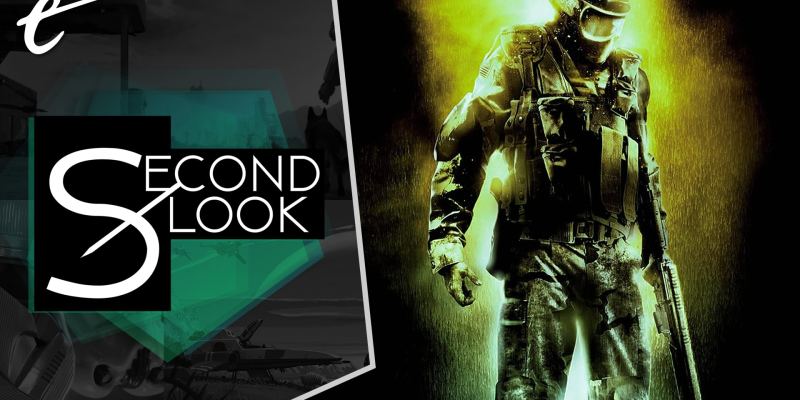Despite taking wildly different approaches to move the storyline forward, both the F.E.A.R. Extraction Point and Perseus Mandate expansion packs overlap a lot with F.E.A.R. 2: Project Origin in the right ways. Alma evolves into a more nuanced character who is equally a threat and asset. New weapons like a laser rifle accompany new threatening antagonists interested in claiming the corporate secrets of series villains Armacham. More varied locations include key levels set in a subway and a hospital. But despite these parallels, Monolith Productions’ Project Origin is ultimately a jarring soft-reboot, whereas TimeGate opted for a gentler approach with its first offering, Extraction Point.
Much as I may praise the original F.E.A.R., the game’s ending blatantly stumbles. After over 10 hours of tense FPS horror, you’re met with enemies who die in one hit from a pistol and slowly fly towards you as you run through the game’s most linear levels. It ends on a typical jump scare after making you think you made it out alright. For such an original project, the finale has all the oomph of a child in a sheet shouting “boo!” Which is where Extraction Point comes in with its blood-soaked machete drawn.
Starting at the final cut scene of the first game, F.E.A.R. Extraction Point literally and metaphorically crashes your party. You and two allies are all split up by the crash, forcing your trio to try to escape the city of Auburn before Alma rears her head again. You can’t reach F.E.A.R. command or the army, twisted poltergeists are seeping into Auburn to massacre civilians, and your late cannibal brother Paxton is resurrected in what may be the worst church service ever. “None of this makes sense,” Paxton remarks, “but I’m beginning to think that doesn’t matter. You killed me. I. Didn’t. Like that.”

With Paxton leading his legion of replicant Armacham soldiers once more, Auburn turns into a pitch-black warzone. Forgoing the office complexes and sci-fi bunkers of its predecessor, Extraction Point throws you into multiple domestic environments. The aforementioned church is an extensive new tactical challenge with its narrow hallways connecting wide rooms for gathering parishioners. In the shadow of a construction yard, snipers hound you and your Delta Force ally, Douglas Holiday. A hospital gone to hell, swarming with scientific and supernatural horrors, digs its claws into you and team medic Jin Sun-Kwon.
This all came bolstered by a significant twist — Alma isn’t necessarily your enemy in F.E.A.R. Extraction Point. In the preceding game, we saw her psyche split in two due to her fractured, brief life: one half a healthy yet ominous child, the other an emaciated teenage corpse. With the newfound knowledge that you are one of her sons, the more caring, child-like half starts helping you. Certain ambushes are decimated in advance. At times when Paxton almost has you in his clutches, Alma smacks you out of his hand. She’ll even whisper helpful words in your ear now and then.
However, the older half, which is more malicious and thus aligned with Paxton, is still a threat. Alma grows from simply being a creepy J-horror trope to a conflicted mother torn between vengeance and protecting a child she’d long thought lost. It’s a surprising amount of pathos that adds welcome depth to an already tragic villain. After the horrific abuse she suffered under her father, she’s torn almost literally in two once she realizes she’s perpetuating the cycle.

Similar depth is injected into the gameplay. F.E.A.R. Extraction Point milks the LithTech engine for all it can with its fantastic use of shadows and also its new game features. The AI is more aggressive than ever, capturing that sense of desperation, with encounters rebalanced to be far more challenging. You do get some new toys, an auto sentry turret and a minigun along with the aforementioned laser rifle. Of the three, only the minigun is lacking, as the sentry is a brilliant countermeasure given the more urban environments affording enemies multiple ways to ambush you. Unfortunately, Extraction Point’s most ambitious evolution, compelling AI companions, goes underutilized.
Friendly AI companions were somewhat rare in general back then, but especially so in F.E.A.R. While it makes sense to isolate the player, the inclusion to fight alongside Holiday is welcome, allowing for more unique set-piece encounters than if you were fighting on your own. David Scully’s pitch-perfect performance evokes his famous Sgt. Johnson from Halo yet is a tad warmer, making the threat looming around all the more distressing. These are the same characters you just managed to escape with mere hours ago. The idea that they’re on the chopping block has far more weight than if paired with a cast of cliches you’ve only just met. It’s a shame F.E.A.R. Extraction Point only clocks in at around four hours, as the solid execution leaves me wondering how TimeGate could’ve explored companion NPCs further.
Regardless, no one can accuse Extraction Point of having a weak ending. Without going any further into spoilers, your last stand against Paxton is a vastly superior closing chapter on Pointman’s story. It captures the desperation that F.E.A.R.’s ending could only grasp at. You’re pressed to expend every resource to reach the titular extraction point, earning that final screaming emotional beat before closing out this chapter in the series.
I’m grateful that F.E.A.R. Extraction Point exists. Instead of drawing out the original story, it wraps it up neatly while promising even greater things to come. With the benefit of hindsight, TimeGate’s vision for the franchise remains far more certain in how to proceed. It’s a shame it never got to finish its own story, though we’ll have to circle back to Perseus Mandate another day. For now, if you’re a fan of F.E.A.R. hankering for some more of that brilliance, you can do far worse than F.E.A.R. Extraction Point. Perhaps it will grant some proper closure to you as well.
